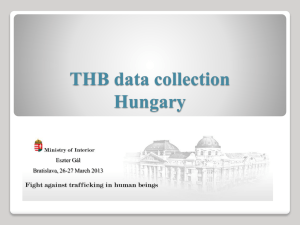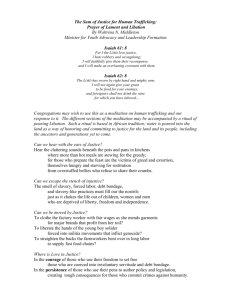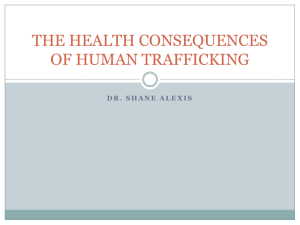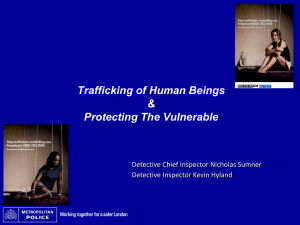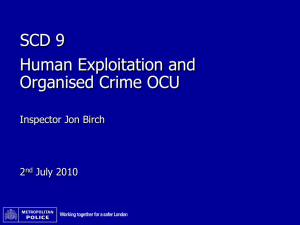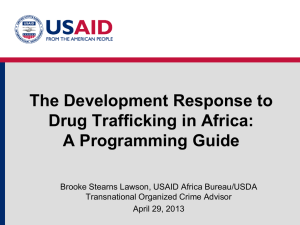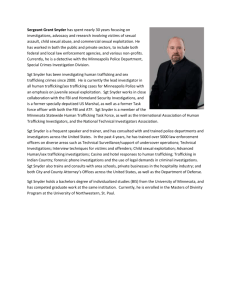Human Trafficking and the UK Criminal Justice System
advertisement
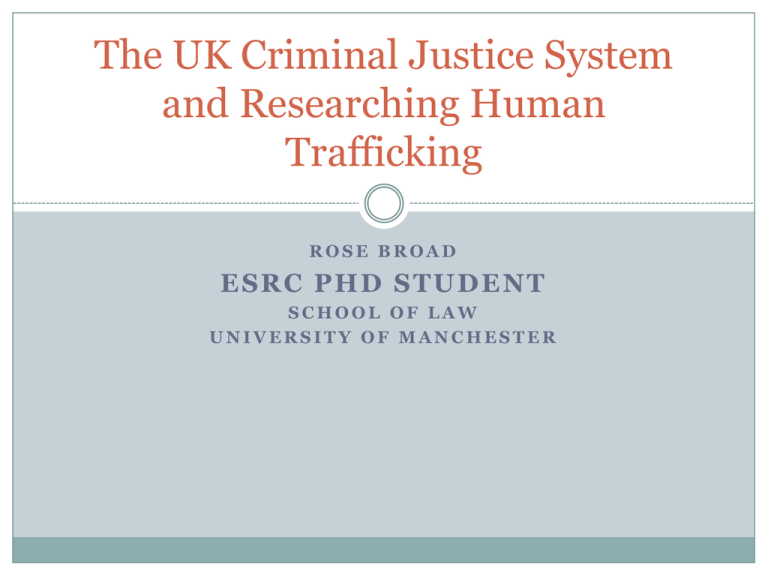
The UK Criminal Justice System and Researching Human Trafficking ROSE BROAD ESRC PHD STUDENT SCHOOL OF LAW UNIVERSITY OF MANCHESTER Human Trafficking in the UK Legislation Trafficking for sexual exploitation – Sexual Offences Act 2003 Trafficking for labour exploitation – Asylum and Immigration Act 2004 Existing research The extent of the problem Victim focussed Organised crime framework – SOCA Lack of research focussed on those convicted for the offences, both within the UK and internationally Problems with research General problems Specific problems with researching ht through the criminal justice system Research Focus • Young, easily manipulated and • • • • • impressionable victim Originates from relatively unknown country to consumers of media Loss of human agency and therefore powerless to resist demands of ‘traffickers’ Parents good, honest and naive Trafficking as an activity of transnational organised crime gangs Traffickers are migrant men posing a tangible threat of the other Research considerations Personal experience Criminal justice experience Researching human trafficking and gaps in current knowledge Discrepancies between policy level and practical level Development of research questions Perpetrator focussed Potential data sources Problems with researching human trafficking Definitions Inaccessibility of victims and perpetrators Access to markets Initial Indications 1: Human trafficking & the cjs Processing human trafficking cases in the cjs Reliance on the victim – consequent and subsequent support ‘Status’ of the victim Multi-agency co-operation and co-ordination International co-operation and co-ordination Implications of legislation Issues of consent and exploitation Chain of evidence – activity in the country of origin Availability of information for purposes of sentencing Theoretical Framework and Data Social constructions “in defining social problems, members of society construct theories about them and make causal inferences about conditions they find offensive, troublesome or intolerable” (Spector and Kitsuse, 1987, p.48). Official constructions Prioritisation of trafficking for sexual exploitation Emphasis on quantification of the problem Data NOMS data - 71 people convicted of trafficking offences Interview data from police, CPS and voluntary sector organisations Initial Indications 2 48 male (68%) and 23 (32%) female offenders Age Range 20-60 Mean 33 Convictions Offences relating to trafficking for sexual exploitation (facilitation/arrangement & arrival/departure) 69 Offences relating to other exploitation 2 63% had a prior relationship with the victim Significant relationship between the source of the offender’s income regarding legality and financial motivation 72% of relevant cases were determined as being sexually motivated rosemary.broad@manchester.ac.uk

